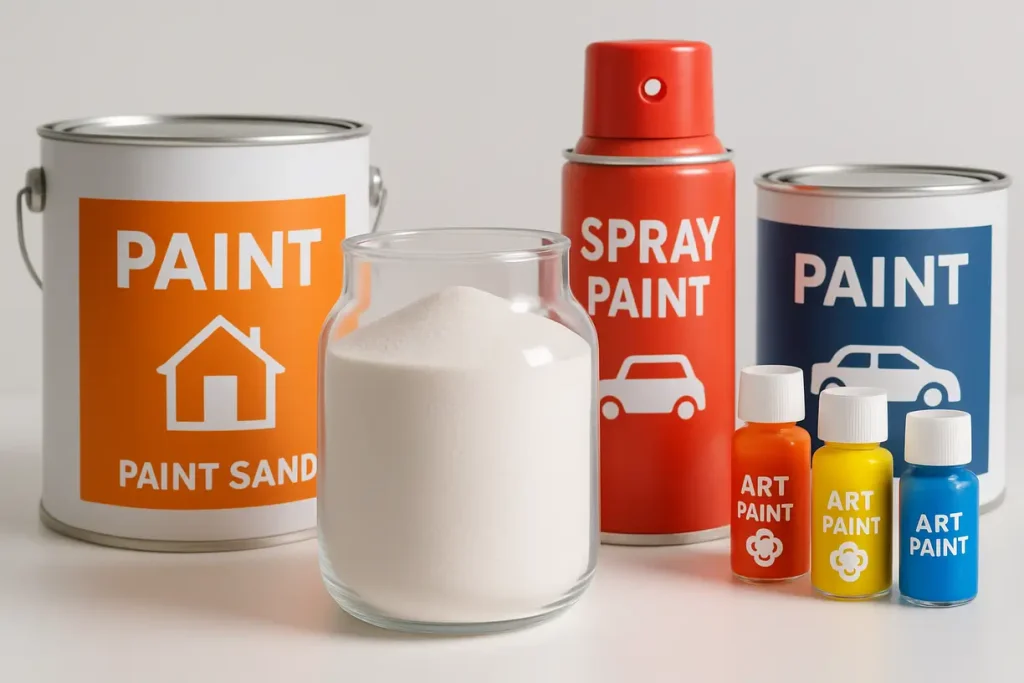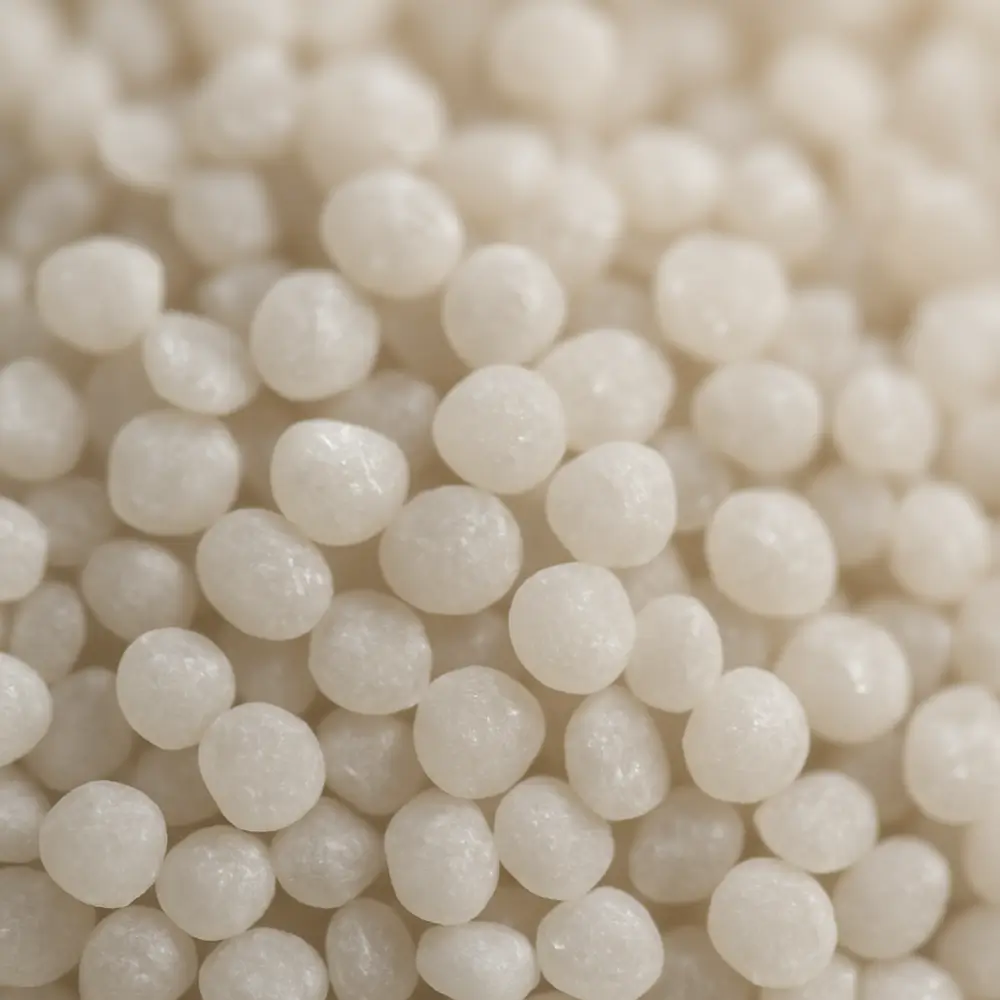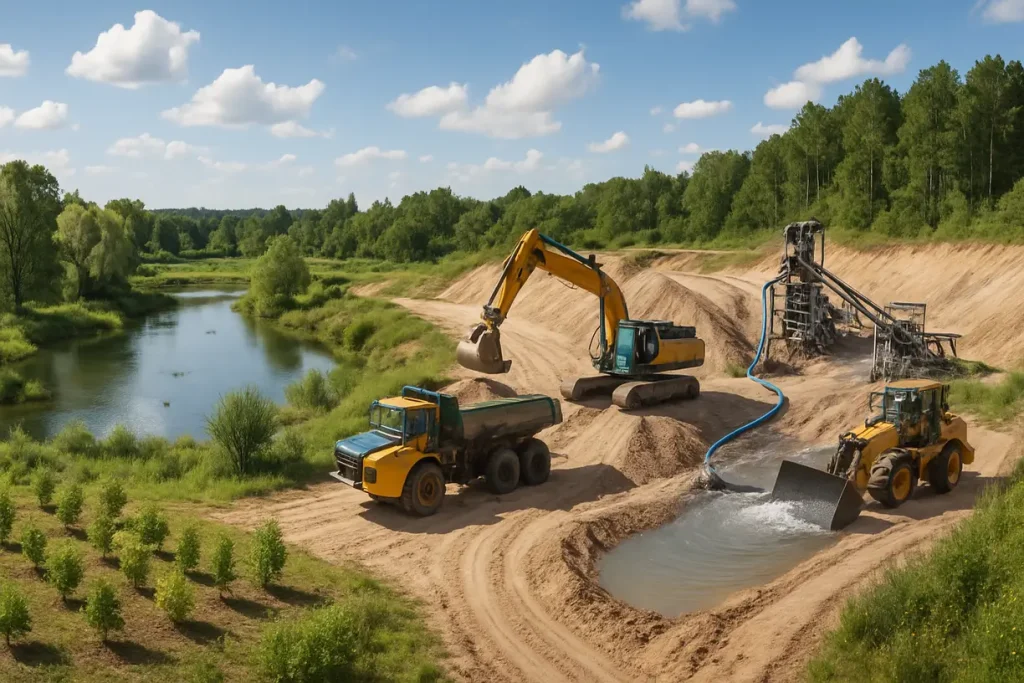In the world of high-performance coatings, many professionals grapple with selecting the right materials that can provide durability and enhance performance. One material that stands out is zircon sand, a critical ingredient that can significantly impact the quality of coatings. This article aims to provide a comprehensive understanding of why zircon sand is essential, addressing common concerns and showcasing its numerous benefits. By the end of this article, you will feel empowered to make informed decisions about incorporating this versatile mineral into your coating processes, reinforcing your confidence in material choices.
The coatings industry faces an ongoing challenge of balancing performance, cost-effectiveness, and environmental impact. Ideally, coatings should not only look appealing but also withstand harsh conditions and maintain their integrity over time. When exploring solutions, professionals often consider factors such as adhesion, durability, resistance to wear, and aesthetic qualities. Given these considerations, integrating zircon sand into formulations offers a practical solution.

This image illustrates the versatility of zircon sand and its applications in various coating products.
Why Is Zircon Sand Crucial for Coatings?
Zircon sand possesses unique properties that render it remarkably valuable in the coatings industry. Foremost among these is its high melting point, which exceeds 2,500 degrees Fahrenheit. This exceptional thermal stability ensures that coatings maintain their integrity even in extreme temperatures, making zircon an ideal choice for applications across various demanding sectors such as aerospace, automotive, and industrial manufacturing.
Coating manufacturers frequently encounter challenges related to performance aspects, including adhesion and resistance to environmental elements. Here, zircon sand proves beneficial by enhancing the core characteristics of the coatings. Its fine particle size allows for uniform distribution within formulations, which contributes to improved coverage and overall performance. This fine particle structure facilitates better interaction with the coating elements, leading to a more cohesive final product.
Moreover, zircon’s unique crystal structure enhances its opacity and brightness, which is crucial for achieving high-quality pigments in both white and colors. This visual appeal can significantly boost the marketability of coated products in industries where aesthetics hold considerable importance.
To illustrate, a study by the American Coatings Association highlighted that coatings incorporating zircon grains not only showcased improved scratch resistance but also exhibited superior performance in corrosive environments. This compilation of desirable qualities solidifies zircon sand’s position as a pivotal material, reinforcing its relevance across multiple sectors in the coatings industry.
What Are the Key Benefits of Zircon Sand?
Zircon sand offers several benefits that enhance coating performance in various applications.
- Thermal stability and heat resistance: The ability of this mineral to endure extreme temperatures without degradation is hugely beneficial across environments where heat is prevalent. For instance, in industrial applications that involve high-temperature processes, coatings formulated with zircon can maintain their integrity much longer than those made with traditional filling materials.
- Chemical resistance and durability: Zircon demonstrates remarkable resistance to a variety of chemicals, including acids and alkalis often found in manufacturing processes. This characteristic is essential in sectors that subject coatings to harsh exposure conditions, such as chemical processing facilities.
- Contribution to aesthetic qualities: The crystal structure of zircon sand also plays a vital role in enhancing the appearance of coatings. The material can enhance the brightness and opacity of finishes, leading to more vibrant colors that attract consumer attention. This is particularly important in the automotive and decorative coatings markets, where visual appeal can significantly influence buying decisions.
Moreover, zircon sand’s unique refractive index means that it can effectively scatter light, providing additional depth and gloss to coatings. This aesthetic benefit often translates directly to increased sales for products that rely primarily on visual appeal.
Want to see how it compares?
| Benefit | Zircon Sand | Other Materials |
|---|---|---|
| Thermal Stability | Excellent | Varies greatly |
| Chemical Resistance | High | Low to Medium |
| Aesthetic Quality | Superior | Limited in focus |
How Does Zircon Sand Affect Coating Performance?
The inclusion of zircon in coatings directly impacts a variety of performance metrics, making it an indispensable component in many formulations. Its unique properties play a crucial role in enhancing adhesion, which promotes stronger bonds between the coating and the substrate. This enhanced adhesion is vital for ensuring that the coatings remain intact and functional over time, even in challenging environments.
Coatings enriched with zircon also display significantly improved scratch resistance. This quality is invaluable in both consumer products, like electronic gadgets, and industrial machinery where wear and tear are common. The addition of zircon mitigates the impact of abrasives and physical stressors, allowing products to maintain their aesthetic appeal and functionality longer.
Moreover, the refined structure of zircon particles can facilitate a smoother and more uniform application process. Coatings that incorporate finer zircon sand can be spread more evenly, reducing the likelihood of defects such as bubbles or uneven surfaces. This improved application not only leads to enhanced visual qualities but can also ultimately reduce labor costs, as fewer touch-ups or corrections are needed.
In comparison to alternative materials, zircon consistently outperforms in terms of longevity and resistance. The unique chemical and physical characteristics of this mineral allow it to endure various environmental stresses better than many other fillers. By choosing zircon over less effective options, manufacturers can produce longer-lasting coated products, a crucial consideration for maintaining competitive advantage in the market.
| Comparison Factor | Zircon Sand | Other Materials |
|---|---|---|
| Adhesion | Strong and reliable | Moderate |
| Scratch Resistance | Exceptional | Variable |
| Longevity | Long-lasting | Typically shorter |
This combination of features makes zircon sand not only a practical choice but also a strategic asset in the formulation of high-performance coatings.

This image displays the size and texture of zircon sand grains, emphasizing their suitability for high-performance coatings.
In Which Industries Is Zircon Sand Utilized?
Zircon finds applications in a wide array of industries, showcasing its versatility and effectiveness.
- Aerospace applications: In the aerospace sector, the demand for materials that can perform under extreme conditions is critical. Zircon sand is utilized in high-performance coatings designed to endure harsh environments, including extreme temperature fluctuations and corrosive elements found in flight conditions. Coatings formulated with zircon not only enhance the durability of aircraft components but also contribute to overall safety and efficiency in operations.
- Automotive industry requirements: Major car manufacturers leverage zircon sand for their paints and coatings, which require a combination of durability and aesthetic appeal. The automotive sector particularly values coatings that maintain their vibrant colors and resist fading due to UV exposure. By incorporating zircon, these coatings achieve superior longevity, scratch resistance, and weathering capabilities, making them essential for high-quality automotive finishes.
- Construction and infrastructure implications: In construction, zircon is employed for robust, wear-resistant materials that protect structures from environmental stresses. Coatings containing zircon sand are vital for shielding critical infrastructure—such as bridges, roads, and buildings—against degradation caused by weather elements and environmental pollutants. This protective quality enhances the lifespan of construction projects, ensuring they remain reliable for years to come.
In addition to these prime sectors, zircon’s adaptability allows manufacturers to fine-tune its use for specific applications across various industries. This customization ensures that coatings with zircon meet the distinct demands of each sector, thus providing safer, more durable, and aesthetically pleasing products.rs to adapt its use across various sectors, ensuring that it meets specific industry requirements and standards. By tailoring coatings with zircon to each sector’s needs, companies can create safer and more aesthetically pleasing products.
What Are the Environmental Impacts of Using Zircon Sand?
Using zircon sand does raise questions about environmental impact, but there are positive aspects to consider. Sourcing this mineral can be done responsibly when practices prioritize minimizing ecological disruption. Many mining operations are transitioning to more sustainable methods that focus on reducing footprints, conserving water, and rehabilitating ecosystems post-mining. This approach not only sustains local wildlife habitats but also helps in restoring the landscapes for future generations.
Moreover, zircon is a recyclable material, contributing to circular economy initiatives. Many companies are finding innovative ways to reclaim and reuse zircon sand in coatings, which not only reduces waste but can also lower costs associated with new material purchases. This recycling process can significantly contribute to sustainability, allowing manufacturers to utilize materials more efficiently while minimizing their overall environmental impact.
Compliance with environmental regulations is another reason companies can feel comfortable using zircon. By choosing materials that adhere to strict guidelines, businesses can ensure that they operate within legal frameworks, thereby reducing the likelihood of adverse environmental consequences while maintaining high performance in their coatings.
Curious about sustainability practices?
| Environmental Impact | Zircon Sand | Other Materials |
|---|---|---|
| Mining Sustainability | Generally high | Varies greatly |
| Recyclability | Yes | Limited |
| Compliance with Regulations | Strong | Weaker |

This image depicts sustainable mining practices for zircon sand, highlighting efforts to minimize environmental impact.
How Do You Process Zircon Sand for Coatings?
The processing of zircon sand involves several key stages that ensure its suitability for high-performance coatings.
First, mining is conducted to extract zircon from mineral sands. This extraction often involves the use of methods such as dredging or dry mining to efficiently gather ore. Following extraction, the sand is then subjected to refining processes, where impurities are separated. This step is crucial as the quality of zircon can vary significantly based on the extraction site; thus, purity levels must be rigorously assessed to ensure optimal performance.
Next, manufacturers employ various processing techniques to achieve the desired particle size and distribution that are vital for coating applications. Finer particles typically yield better coverage and performance, enhancing the uniformity of coatings. This involves milling and classification processes, which help achieve the required consistency for applications where precision is critical.
Quality control measures also come into play during processing. Regular testing of particle size, purity levels, and other characteristics helps manufacturers maintain high standards in their products. For instance, sieving can ensure that only the correctly sized particles are used, further enhancing the expected performance of the coatings. Understanding these processing stages is paramount for businesses selecting high-quality materials that are better suited to their specific applications, ultimately affecting their end results positively.
In summary, careful processing and quality control are indispensable in maximizing the effectiveness of zircon sand in high-performance coatings.
What Innovations Are Emerging in Zircon Sand Applications?
The coatings industry is continuously evolving, and zircon is leading the charge in several exciting ways. Technological advancements are opening new horizons for the utilization of zircon sand, pushing the boundaries of what is possible in coatings.
Recent advancements include the development of composite coatings that incorporate zircon grains in conjunction with other specialized materials, enhancing performance beyond what traditional coatings can offer. For instance, innovations in formulations are merging zircon with polymer-based resins, resulting in coatings that not only adhere better but also provide additional benefits, such as increased flexibility and enhanced resistance to extreme environmental conditions.
Moreover, research trends indicate an increasing focus on creating coatings that are not only durable but also adaptive. This means coatings that can respond to temperature changes, resist corrosion more effectively, and maintain their appearance over time. Zircon’s unique properties make it an ideal candidate for such innovations, as its stability contributes to the performance of these advanced formulations.
Additionally, laboratories worldwide are experimenting with different combinations and applications of zircon, confirming its relevance in cutting-edge developments. The versatility of zircon continues to inspire new ideas, leading to coatings that are lightweight yet strong, opening opportunities for sectors like electronics, automotive, and even renewable energy technologies.
Want to see what’s next in this sector?
| Innovation Area | Description |
|---|---|
| Composite Materials | Enhanced performance coatings |
| Research Trends | Focus on adaptive and resilient coatings |
| Case Studies | Highlighting real-world applications |
How Can Businesses Optimize Zircon Sand Usage?
Businesses keen on maximizing the efficacy of zircon can adopt several best practices to enhance their operations.
First, it is essential to evaluate potential suppliers carefully. Conducting thorough research on suppliers can lead to more reliable partnerships. Prioritize suppliers that demonstrate a commitment to quality, sustainability, and ethical mining practices, as these factors will directly impact the effectiveness and reliability of the coatings you produce. Establishing a good relationship with suppliers can also lead to better pricing and access to the latest product innovations.
Second, assess and optimize the integration of zircon in existing formulations. Experimenting with different ratios of zircon to other materials can unlock new possibilities, resulting in coatings that are not only more effective but also cost-efficient. This iterative process can involve small-scale testing and adjustments to find the perfect blend that aligns with specific performance goals.
Lastly, businesses should always seek economic advantages in sourcing and utilizing zircon. Staying informed about market trends and pricing can help companies make strategic decisions regarding material purchases. Consider implementing bulk purchasing strategies or long-term contracts with suppliers to secure more favorable rates. Additionally, regularly reviewing performance outcomes and costs associated with zircon usage can identify further efficiencies, helping companies maximize their return on investment.
| Best Practice | Description |
|---|---|
| Supplier Evaluation | Focus on quality and reliability |
| Integration Assessment | Test and refine formulations |
| Economic Sourcing | Identify cost-saving strategies |
Conclusion
In summary, zircon sand presents a multitude of essential benefits for high-performance coatings, including enhanced durability, aesthetic appeal, and compliance with environmental standards. Its unique thermal stability and chemical resistance make it an invaluable asset across various industries, such as aerospace, automotive, and construction. Companies that incorporate this versatile material can expect not only improved product longevity but also reduced maintenance costs, leading to greater customer satisfaction and loyalty.
By leveraging zircon sand in their formulations, manufacturers position themselves to stay competitive in a rapidly evolving market. Ultimately, partnering with suppliers that offer high-quality zircon and tailored solutions can empower businesses to optimize their coating processes, ensuring superior performance and impressive results. Elevate your coating products by integrating zircon sand today and realize the potential for innovation and excellence in your offerings.
FAQ Section
Q1: What are the properties of zircon sand?
Zircon sand is known for its exceptional thermal stability and chemical resistance. These properties make it highly suitable for high-performance coatings that need to withstand extreme temperatures and harsh environmental conditions without degrading.
Q2: Why is zircon preferred over other materials?
Zircon is preferred due to its superior durability, enhancing the lifespan of the coatings. Its unique crystal structure improves aesthetic qualities, providing better opacity and brightness compared to many alternative mineral fillers, making it a popular choice in industries focused on appearance.
Q3: How does using zircon sand impact coating longevity?
Incorporating zircon sand into coatings improves adhesion and resistance to wear and tear. This results in coatings that can last longer under challenging conditions, reducing the need for frequent reapplication and maintenance, which is beneficial for both manufacturers and consumers.
Q4: Are there any environmental concerns with zircon?
While zircon mining can have environmental impacts, many companies are now implementing sustainable sourcing practices. These include minimizing ecological disruption and ensuring that mining operations adhere to strict environmental regulations, focusing on responsible mining and rehabilitation of natural habitats.
Q5: What industries benefit the most from zircon coatings?
Industries such as aerospace, automotive, and construction benefit significantly from zircon coatings. Their unique properties enhance performance and durability in applications ranging from aircraft components to automotive finishes and protective coatings for infrastructure projects, ensuring safety and longevity.
